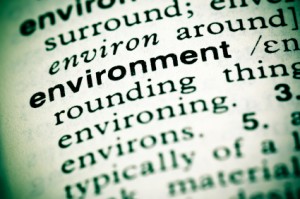Will Employees Choose the Greener Options for Office Printing?


A big topic at the recent Executive Sustainability Summit at ASU in Phoenix was the management of printing in a sustainable way. Angele Boyd, a Group VP / General Manager with research firm IDC, spoke at the event and shared her extensive knowledge on the greening of IT and printing. She presented survey results that gave a picture of how companies and employees view printing.
Customers express high interest in being green, but when it comes to people actually acting on their intentions, well…not so much. The two main environmental concerns employees expressed were about depletion of natural resources (trees, water, energy) and perceived harm to the environment from toxic materials in printers and in ink/toner. In IDC's surveys, 61% of employees say that the environment is an important consideration when they decide to print or not. But – and here's the big disconnect – only 16% of them actually act on those beliefs and avoid printing because of the environment.
Luckily, companies are finding a number of ways to automate the process of reducing the footprint, and Boyd laid out some of these new policies. Boyd's list of advances in paper reduction included:
- Two-sided printing (duplexing). Right now, according to Boyd, only 20% of employees' prints are duplexed.
- N-up printing which fits up to 8 originals on one or both sides of a page.
- Restricting/eliminating banner pages using driver/device settings.
- Hold/release print jobs using PIN codes. Basically, the user has to punch in a code to get it to print, a process that checks whether people really wanted that document.
- Set page limits/quotas by individual or group.
- Scanning for digital document distribution.
Finally, a larger play falls under the category of Managed Print Services (MPS). Boyd's independent analysis shows that MPS saves organizations an average of 25% on printing (and up to 40%), which could mean saving $6 million for a $250 million company.
You can read more from Winston here. The trick, it seems, is getting people to actually act on their natural instincts. Doc thinks this will come more from a real commitment to sustainability on the corporate level than on a lot of restrictions and rules at the printer level. But whatever works is a good thing.